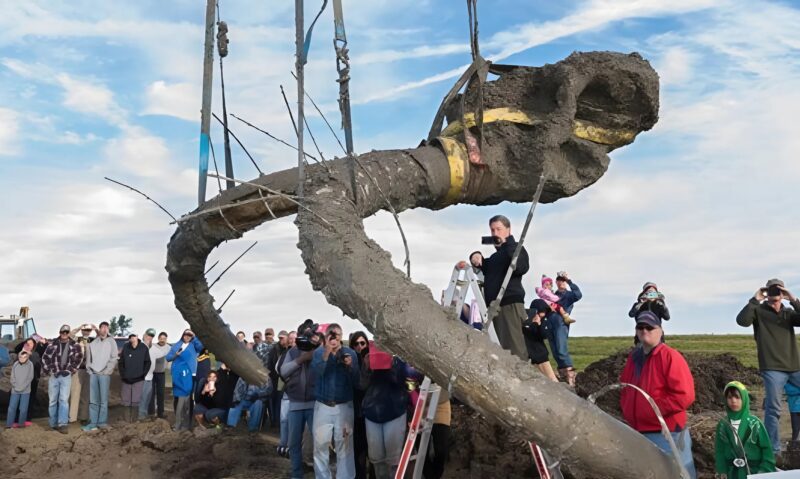At first, he assumed it was just a buried stone. But the deeper he dug, the stranger it became. The texture wasn’t like any rock he’d ever seen—smooth, solid, and oddly symmetrical.
Then he spotted something that made him stop cold. 😱
(Full story continues in the comments 👇👇)

Determined to cut his energy bills, the farmer had taken on the ambitious project of running a private gas line. He chose a soft, unused part of his property to start the work—ground that was easy to dig and free of large roots or debris.
But about five feet in, the excavator jolted to a stop. He shut it down immediately and jumped into the trench with his shovel and a flashlight.
Expecting a typical glacial boulder, he instead found something smooth and oddly shaped. After two hours of careful digging, he exposed something astonishing: a massive, curved object that looked like a tusk.
Then another one—perfectly positioned opposite the first. Slowly, the outline of a large skull came into view: arched brow, hollow sockets, a sweeping jaw.
Overwhelmed, he called two nearby neighbors to help. Together, they uncovered more of the massive remains. It was clear now—this was no ordinary animal.
The next morning, he contacted a university in the closest major city. A day later, a paleontologist and several students arrived.
Their conclusion left everyone speechless: the remains belonged to a woolly mammoth, estimated to be over 20,000 years old.
The bones—tusks, skull, and ribs—were in extraordinary condition. Experts believed the animal had died suddenly, perhaps trapped in a landslide or swept away by a flood, its body quickly buried and preserved by the elements.
But just as the professor prepared to have the bones transported to a museum, the farmer did something unexpected—he said no.

He refused to let the mammoth be taken away.
Why? What was he planning?
The story took another turn, one no one could have predicted…
![]()